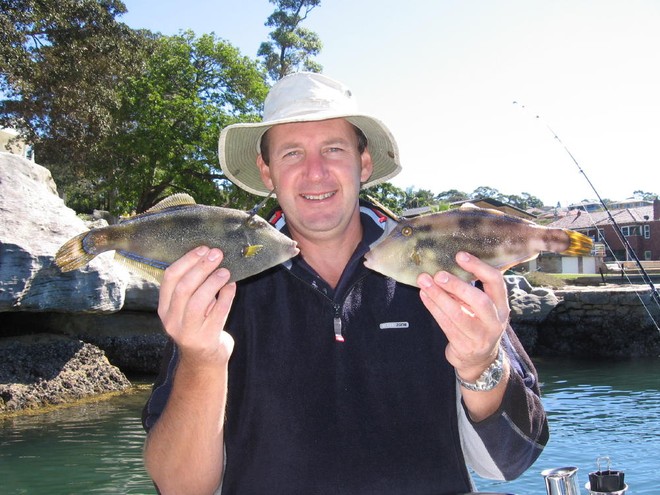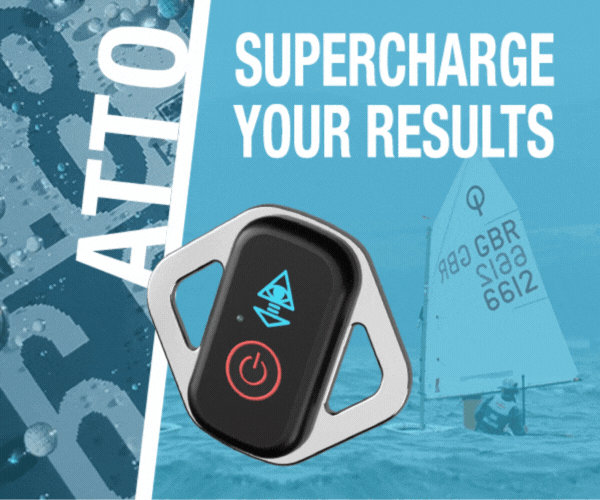Techniques for fishing in and around Pontoons, Marinas and Wharfs
by Gary Brown on 23 Jan 2013

Leatherjackets just love to hang around structure (pontoons and marina's) to feed Gary Brown
The main thing that you have to remember when fishing pontoons and marinas is that they are private property and that you will need to treat them and their owners with respect. For instance if you cast a bait, lure or jig heads near a pontoon, marina or wharf and it accidently land on it and gets caught. Don’t just bust it off. Go over and carefully remove it. There would be nothing worse than pulling in a rope and having a hook point and barb stick into your hand.
In many of the areas that I target bream, leatherjackets and trevally I will cast as close as I can to the edges of the marinas and pontoons, but when it comes to wharfs I will try and put the bait, lure or jig as far under the wharf as I can. The only problem with this is that you really need to react extremely quickly to get the fish out from under the wharf. They definitely know where to go to bust you off.
In this article I will endeavour to relate to you a couple of bait and lure techniques that I use to make fishing the Pontoons, Marinas and Wharves as successful as I have experienced over the years.
When bait fishing for bream underneath marina’s and pontoons with baits I use a number of different techniques, but before casting my bait into the water I would anchor up and start up a light berley trail that would flow down through the water column and underneath the pontoon or marina. Once the berley trail is going I would drop the unweighted or slightly weighted bait into the water about 10 metres up current of the structure and then allow it to drift back towards the structure. This would then allow the bait to get down to where the fish where feeding underneath the marina or pontoon. I found that using either a bait runner reel, a thread line reel with the bail arm open or an Alvey side cast reel ideal for this.
When the fish takes the line you will need to be very quick to either wind the handle putting the reel back into gear or push the bail arm back over. All this would have to be carried out in a second or two while at the same time striking to set the hook or you will find that you have lost the fish to those underwater snags.
You could also try floating diving hard body lure back pass the structure and then slowly retrieve it back towards you. Using this technique would allow you to get a fair distance back either alongside the pontoon or under the wharf before you had to start my retrieve.
I don’t think that I have come across too many wharfs or a marina’s that I have not found at least one leatherjacket swimming and feeding around.
They may be a simple fish, but they do feed in a fascinating way. Leatherjackets will suck the bait off a hook as quick as look at you. To work out what size piece of prawn to put on the hook I have put on a pair of goggles and snorkel and put my head under the water and watched how leatherjacket feed.
I got a mate (Rob) of mine to lower a long shanked hook that was fully covered by a piece of peeled prawn down to the bottom. What I observed was that the leatherjacket will position its mouth about 1cm away from the bait. It will then extend its lips outwards and slow suck at the bait, removing it from the hook. Rob never felt a thing, but the bait was gone.
The next drop to the bottom the hook had a non peeled prawn on the hook. All that Rob came up with was the shell of the prawn. The leatherjacket had sucked out the flesh of the prawn.
The final drop saw the hook with a very small piece of peeled prawn on it. The small size of the prawn made the leatherjacket come closer to the hook causing it to suck the point and barb of the hook into it mouth. What Rob came up with this time was the leatherjacket. It may not work every time, but try it you will be surprized at the results you will get.
The rig that I use for leatherjacket fishing in the estuaries is a paternoster rig with one number 10 long shank hooks and a sinker of about an ounce in weight. Even though the main bait that I use for leatherjackets is a small piece of peeled prawn, I will also use small pieces of squid and pilchards. By small, I mean the bait is just a bit bigger than the gape of the hook.
Another great artificial to use around pontoons, marinas and wharfs is the blade. Try dropping the blade down directly beside the structure. Once it has hit the bottom, wind up the slack and then start moving the rod (slowly) up and down. Just the same as if you were dunking a tea bag. This method will not only catch you a few bream, but you will get the odd leatherjacket and trevally.
If you want to link to this article then please use this URL: www.sail-world.com/105835

